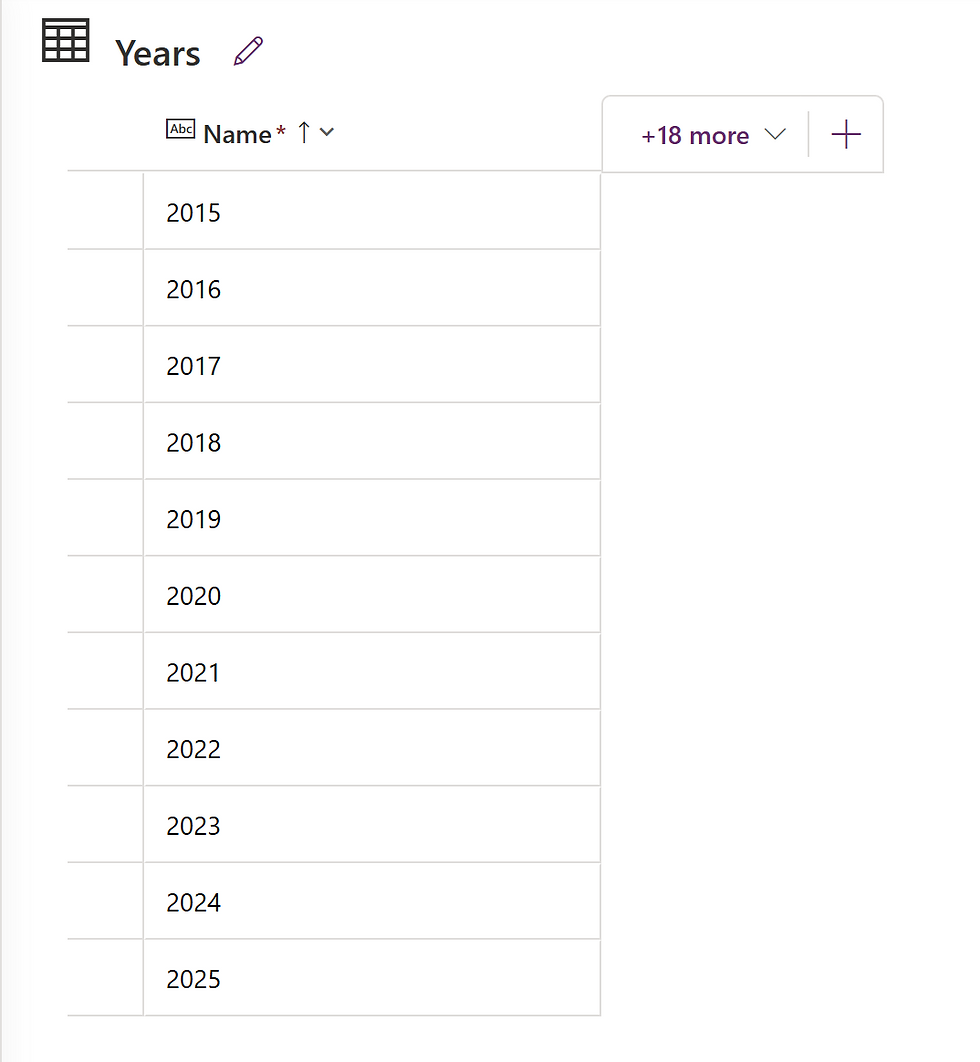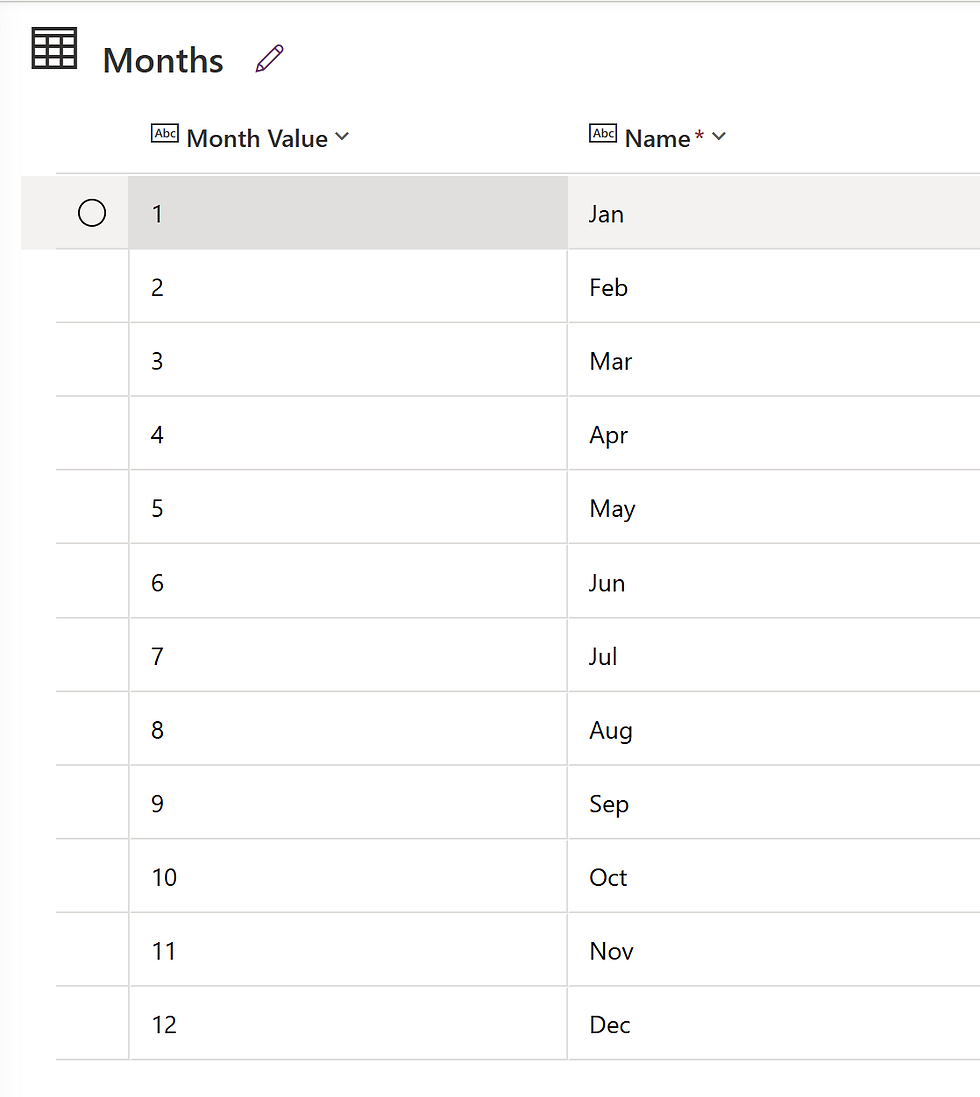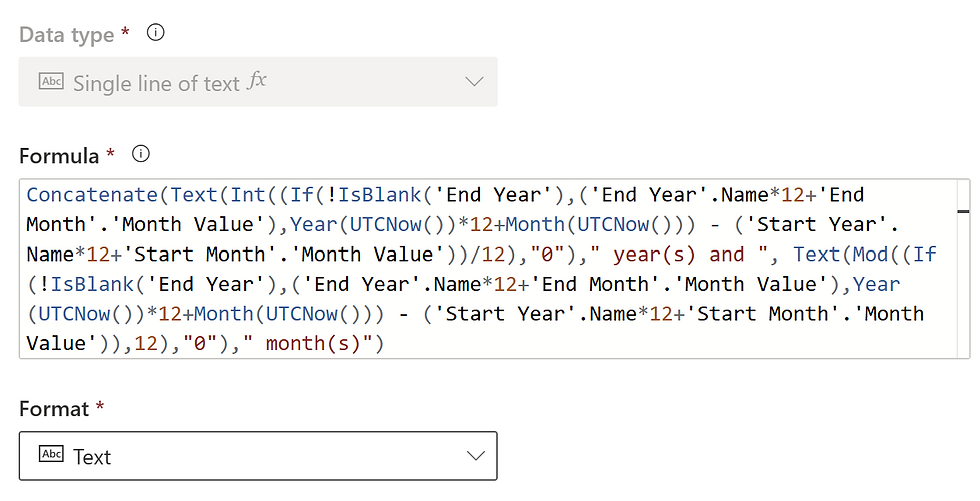Power Fx in Dataverse: Calculate Duration from Month and Year Columns
- Yash Agarwal

- Aug 5
- 4 min read
In this #PowerShot, I will walk you through creating logical expressions to accurately compute the duration in a Dataverse Formula column using Power Fx. These calculations rely on the end year, end month, and start year, start month columns. No complete date column is used in this calculation. This approach is helpful when you need to implement logic without having absolute dates in the data.
Let's Get Started
Initially, it's crucial to grasp the significance of duration calculations. Dataverse formula columns don't inherently support duration calculations if a table doesn't have date type data for the calculation. When only end year, end month, start year, and start month columns are present, users can't depend on reference data. These calculations are particularly useful for scenarios such as reporting or improving data presentation on a form or view.
Now, let’s delve into the specifics of how to construct these logical expressions using Power Fx, the formula language used in Canvas Power Apps and Dataverse Formula Columns. Power Fx allows users to create dynamic and flexible formulas that can manipulate data effectively. The first step involves accessing the Formula column in your Dataverse table where you want to implement these calculations. Once you are in the Formula column editor, you will be able to input your logical expressions.
Initial Setup
To implement a clean data setup, we need to have a Month and an Year table in Dataverse with required columns so that this data can be referenced in the main table. Below is a sample setup of these two Dataverse tables with sample data.
Table Name: btd_year
Column Name | Schema Name | Data Type | Purpose |
Name | btd_name | Single Line of Text | To store the year value in text format |
Data for Year table:

Table Name: btd_month
Column Name | Schema Name | Data Type | Purpose |
Name | btd_name | Single Line of Text | To store the month name |
Month Value | btd_monthvalue | Single Line of Text | To store month value in text format |
Data for Month table:

In order to implement the calculated fields for the duration, we need to have the 4 data columns (end year, end month, start year and start month) in the Dataverse table on which we can implement the calculation. Below is a sample setup of a Dataverse Table with the 4 columns:
Table Name: btd_returns
Column Name | Schema Name | Data Type | Purpose |
End Year | btd_endyear | Lookup | Lookup to Year table |
End Month | btd_endmonth | Lookup | Lookup to Month table |
Start Year | btd_startyear | Lookup | Lookup to Year table |
Start Month | btd_startmonth | Lookup | Lookup to Month table |
Calculating Duration
Below is the schema and formula for the Duration column:
Column Name | Schema Name | Data Type | Formula |
Duration | btd_duration | Formula (Single Line of Text) | Concatenate(Text(Int((If(!IsBlank('End Year'),('End Year'.Name*12+'End Month'.'Month Value'),Year(UTCNow())*12+Month(UTCNow())) - ('Start Year'.Name*12+'Start Month'.'Month Value'))/12),"0")," year(s) and ", Text(Mod((If(!IsBlank('End Year'),('End Year'.Name*12+'End Month'.'Month Value'),Year(UTCNow())*12+Month(UTCNow())) - ('Start Year'.Name*12+'Start Month'.'Month Value')),12),"0")," month(s)") |

Explanation:
If we break down the above formula, and let's assume, End Year = A, End Month = B, Start Year = C and Start Month = D
We first calculate the Year difference by using:
INT(((A*12+B) - (C*12+D))/12)
and then calculate the Month difference by using
MOD(((A*12+B) - (C*12+D))/12)
Finally, the result is concatenated with the string as shown in the formula.
One thing to note in the formula is, in case the End Year and End Month are not provided by the user, the UTCNow() function is used to get the current month and year to facilitate the calculation. If this is not a requirement in your case, you can get rid of the If condition and the UTCNow() logic.
Setup Results
Below is a screenshot from the table in Dataverse where we can see that the start year, start month, end year and end month are provided by the user and the Duration column is calculated based on the logic implemented using the formula above.

By implementing the logic outlined in this post, you will be fully prepared to calculate duration effectively within your Dataverse Formula columns. This functionality not only improves your data manipulation capabilities but also significantly enhances your analytical processes. Whether you are managing project deadlines, tracking performance metrics, or analyzing time-related data, these duration calculations will ensure precision and streamline your reporting and data management efforts.
I hope you found this interesting and it helped you. Thank you for reading!





Comments